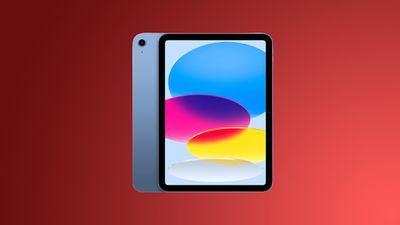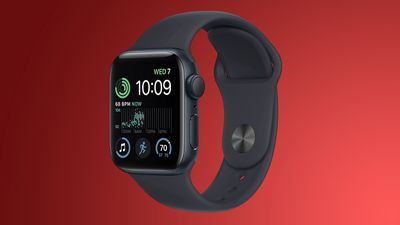Apple is going to have a busy year in 2025, based on the rumors that we're hearing right now. All of the rest of the Mac lineup will be updated with M4 chips, plus there's a new iPhone SE coming, and a whole new iPhone 17 "Air" that's slimmer than any iPhone to date.
The iPhone 17 Pro models might also get a major design update with a new look for the camera and the chassis, plus Apple is going to debut a whole new "Command Center" device for smart homes. New AirPods Pro 3 are on the horizon, and some iPad refreshes are coming, too.
This guide outlines everything that we know about the new products coming from Apple in 2025, based on current rumors.
New Flagship iPhones
It'll come as no surprise, but this September, Apple will unveil the iPhone 17 lineup. Apple is making some major changes to its flagship models this year, eliminating the iPhone 17 Plus and introducing a new ultra thin model.
iPhone 17 Air (September 2025)
In 2024, Apple introduced a super thin iPad Pro that's just 5.1mm thick, and it's part of a new trend toward making products thinner and lighter. Instead of an iPhone 17 Plus, this year we're getting a super thin iPhone 17 that'll be something of a hybrid between the standard iPhone 17 and the iPhone 17 Pro in terms of price.

We don't yet know what Apple will call the new iPhone, but rumors have been referencing it as the "iPhone 17 Air," and the "Air" name fits in with the "Pro" naming that Apple already uses for the iPhone lineup.
The iPhone 17 Air will mark the biggest update to the iPhone's design we've had since the iPhone X launched in 2017. The iPhone 17 Air isn't a directly replacement for the iPhone 17 Plus, so it's not just an iPhone 17 that's thin. It's going to have a single-lens 48-megapixel camera rather than a dual-lens or even triple-lens setup, and there's a new display size.
It's supposed to have a 6.6-inch display, so larger than the iPhone 17 and 17 Pro, but smaller than the 17 Pro Max. It will be slim, but just how slim is unclear. Rumors suggest that it could be around 2mm thinner than the iPhone 16 Pro, which measures in at 8.25mm thick, so between 6 and 6.25mm is likely. That would make the iPhone 17 Air the thinnest iPhone to date, slimmer even than the 6.9mm iPhone 6 that holds the title right now.
Because the new iPhone is so thin, it can only house a single-lens rear camera, and there's only going to be one speaker at the top rather than one at the top and one at the bottom. It's possible there will be a narrower pill-shaped cutout for the front-facing camera, resulting in a narrower Dynamic Island, but whether that'll actually happen remains to be seen.
This year, all iPhone 17 models are expected to get ProMotion display technology with up to 120Hz refresh rates, so that will no longer be a feature limited to the Pro models.
The iPhone 17 Air could get a titanium-aluminum frame, which would keep it lightweight, and it will have the same next-generation chip Apple plans to use in the iPhone 17 rather than the higher-end chip Apple will use for the Pro models.
Apple plans to use its Apple-designed modem in the iPhone 17 Air to test it out. The new 5G chip will be launched in the iPhone SE, low-cost iPad, and iPhone 17 Air this year, and Apple is already working on improvements that will make it feasible to use across the iPhone lineup.
The 5G chip won't support mmWave 5G, but it does have sub-6GHz 5G, which is more commonly used in suburban and rural areas in the U.S. and in other countries.
With the iPhone 17 Air, Apple is focusing on design and form factor as the device's selling points rather than its internals, and we are expecting a price tag somewhere between the iPhone 17 and 17 Pro. It's likely to be more expensive than the iPhone 16, which is priced starting at $799, but less expensive than the 16 Pro, which starts at $999.
iPhone 17 (September 2025)
Apple still plans to offer a plain old iPhone 17, and it could have a larger 6.3-inch display, up from 6.1 inches. It's expected to be Apple's lowest-cost flagship device, but rumors suggest we can count on a dual-lens camera setup with a 48-megapixel Main camera, a 24-megapixel front-facing camera, and support for ProMotion.
iPhone 17 Pro (September 2025)
The iPhone 17 Pro and iPhone 17 Pro Max will be Apple's high-end devices per usual, but this year there could be some notable design changes. Rumors suggest Apple is planning to do away with the titanium frame in favor of an aluminum frame, and there could be a half-glass half-aluminum rear casing.

Removing half of the glass in the iPhone 17 Pro models and replacing it with aluminum would make them more durable to drops and damage, while leaving support for wireless charging in place.
There have also been rumors about a new camera bump that's made from aluminum rather than glass. Some rumors say it will have an "elongated oval shape" and a horizontal layout, but it's not quite clear just what the camera setup is going to look like at this point.
The iPhone 17 Pro models could get 12GB RAM, with other models set to have 8GB RAM.
Apple is expected to upgrade the camera in the Pro models, introducing a 48-megapixel Telephoto lens. With that upgrade, the iPhone 17 Pro models will have a 48-megapixel Wide lens, a 48-megapixel Ultra Wide lens, and a 48-megapixel Telephoto lens.
At least one iPhone 17 model is expected to have a mechanical aperture that will let users adjust the size of the aperture, which changes the amount of light that reaches the lens. A variable aperture will let images be captured with a shallower depth-of-field, and it's likely that this would be an iPhone 17 Pro feature.
Features Rumored for All iPhone 17 Models
- 24-megapixel front-facing camera with six-element lens, a notable upgrade over the current 12-megapixel selfie camera.
- ProMotion Display technology with 120Hz refresh rate, enabled by the use of LTPO panels.
- Always-on display technology across all iPhone 17 models.
- Tougher Ceramic Shield coating with anti-reflective layer better able to stand up to wear and tear
- A19 chip, though iPhone 17 Pro models will likely get A19 Pro chips. A19 chips will be faster and more efficient.
- An Apple-designed Bluetooth and Wi-Fi 7 chip.
iPhone SE 4 (Early 2025)
It seems like we've been hearing about a new iPhone SE for years now, and the next-generation version of Apple's low-cost iPhone will finally launch in 2025.

The iPhone SE 4 will mark the end of Touch ID in the iPhone lineup, as Apple is transitioning to Face ID for the device, and it will also spell the end of ultra small phones with no more 4.7-inch screens available.
Rumors suggest that the iPhone SE 4 will be modeled after the iPhone 14, with a 6.06-inch display, Face ID, and a notch. At that size, the iPhone SE 4 will be significantly larger than the current iPhone SE. It will use OLED display technology, which also means Apple will finally finish phasing out LCD displays from the iPhone lineup.
The device will have a single-lens 48-megapixel rear camera and a USB-C port. There is a possibility it will have the same multi-function Action Button that's available with the iPhone 16 models.
The iPhone SE will get a faster A-series chip, likely the A18, which will support Apple Intelligence. Adding Apple Intelligence support also means that it will need a minimum of 8GB RAM.
With the launch of the iPhone SE, Apple will introduce the custom modem chip that it has been designing in-house for the last several years. The Apple 5G chip won't support mmWave 5G, but it will support sub-6GHz. Apple is debuting the modem chip in the iPhone SE to make sure that it works well before it is expanded to additional devices such as the flagship iPhones.
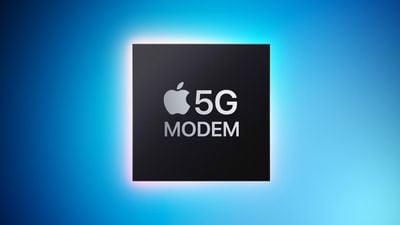
Though the iPhone SE is getting a slew of major upgrades in 2025, we are expecting a sub-$500 price tag for the device. The iPhone SE 4 will likely launch in early 2025.
Smart Home Command Center
Apple is developing a home accessory that's meant to serve as a central hub or "Command Center" for smart home management. While the Apple TV and HomePod are already home hubs and there are multiple options for controlling a HomeKit setup, Apple is creating a more accessible all-in-one home management product that will make control easier.

The device is said to somewhat resemble an iPad, but it has a more square design with a six inch display that has thick bezels around the edges. It will be about the size of two iPhones side-by-side, making it small enough to tuck into any area of the home, and to be transported from room to room.
The hub's display will support touch input for opening apps and controlling connected devices, and while it's not getting a dedicated App Store, it will have Apple apps like Notes, Calendar, Home, Apple Music, Apple News, Photos, Safari, Reminders, and more installed.
Apple is designing a dock that can house the hub, but it will also be able to be mounted on the wall. Speakers will be built in, and there will be a camera for FaceTime calls. Built-in sensors will be able to determine how close a person is to the hub, and information displayed on the screen can shift based on that proximity. It may also support person detection that would allow it to be used in smart home automations for doing things like turning on the lights when someone enters a room.
With an A18 chip, the device will support Apple Intelligence, and speaking to Siri will be a main part of communication with the hub. Apple envisions multiple devices being in different rooms of the house, and the device will serve as a room-to-room intercom and it will be able to play music.
Competing products from companies like Amazon have hub accessories priced at around $90, so Apple may be aiming to meet that price point with its own hub. The smart home hub could be released as soon as early 2025, though there has been some disagreement on its launch timeline so it could also come later in the year.
Apple Watches
In 2024, Apple only updated the Series 10, but this year, there are updates for the standard Apple Watch, the Apple Watch SE, and the Apple Watch Ultra planned.
Apple Watch Series 11 (September 2025)
The Apple Watch gets a yearly refresh, and 2025 will be no exception. If Apple can finish the feature on time, the Apple Watch Series 11 could support blood pressure monitoring. The feature won't measure exact systolic and diastolic blood pressure levels, but will instead measure trends and alert the wearer if high blood pressure has been detected.

Apple is transitioning to MediaTek cellular modems for future Apple Watch models, doing away with Intel's modems. Apple will use MediaTek's 5G chip, which supports 5G RedCap, a 5G service aimed at wearables. 5G RedCap doesn't offer standard 5G speeds, but it would likely be an improvement over the 4G LTE the current Apple Watch models are limited to.
Apple Watch Ultra 3 (September 2025)
Apple did not refresh the Apple Watch Ultra in 2024, but a new model is expected in 2025. The Apple Watch Ultra 3 will get satellite connectivity, allowing for off-grid texting and communication when Wi-Fi and cellular connections are unavailable. Satellite connectivity would be an Apple Watch Ultra exclusive, distinguishing it from Apple's lower-cost models.

A blood pressure monitoring feature could be included in the Apple Watch Ultra 3 if Apple is able to complete work on it in time for a 2025 launch.
Apple Watch SE (September 2025)
Apple will refresh the Apple Watch SE in 2025, adding a new, faster processor. As a lower-cost Apple Watch option, the Apple Watch SE does not offer the same health features as the standard Apple Watch like ECG functionality, the ability to read temperature, and more, but it does have all of the standard sleep tracking and heart rate tracking features.

The next Apple Watch SE could get a notable update, with Apple transitioning from an aluminum casing to a rigid plastic material instead. Plastic would be more affordable than aluminum, and it could be made in bright colors, better appealing to children and their parents.
Apple has been focusing on Apple Watch for kids marketing, and the Apple Watch SE offers a way for parents to give their children managed devices for location tracking and communication.
New Apple Watch models often come out in September, so we are expecting to see the next Apple Watch SE debut alongside new iPhones in the fall.
AirPods Pro 3
The AirPods were refreshed in 2024, and in 2025, it's the AirPods Pro's turn. New AirPods Pro 3 are expected at some point in 2025, though the timing is not yet clear.
![]()
Apple is working on a new design for the AirPods Pro 3, but details are light as of now. Both the earbuds and the case will get a refresh, with the case perhaps getting slimmed down like the AirPods case.
Better audio quality is expected, along with improvements to Active Noise Cancellation and better integration with the Vision Pro headset.
Apple is working on a new H3 connectivity chip that powers everything from Active Noise Cancellation to Siri, and a faster H3 chip could bring multiple improvements for ANC, music quality, spatial audio, and more.
There are rumors that Apple has been testing some AirPods health features like body temperature monitoring and heart rate monitoring, and there is a possibility that we could get those features. Temperature reading specifically has the potential to be useful because temperatures taken from the ear are more accurate than the wrist temperature measurement the Apple Watch uses, and heart rate monitoring would bring the feature to iPhone users who do not have an Apple Watch.
With the AirPods 4, Apple removed the physical pairing button and replaced it with a hidden capacitive button and a hidden LED light, so we could see those same updates made to the AirPods Pro 4.
HomePod Mini
Apple will update the HomePod mini in 2025, adding a faster S-series chip and a new Apple-designed Wi-Fi and Bluetooth chip that will replace components from supplier Broadcom. Along with these internal changes, we will likely see new color options. Timing on the HomePod mini refresh is unknown.

Apple TV
Apple is expected to refresh the Apple TV 4K in 2025, adding a faster A-series chip and a new Apple-designed Bluetooth and Wi-Fi combo chip. The new chip will allow Apple's smart home devices to work better together and synchronize data quicker.

No design changes are expected for the Apple TV, and it's not quite clear when in 2025 a new model might come out.
MacBook Air (Early 2025)
In early 2025, Apple plans to update the 13-inch and 15-inch MacBook Air models with M4 chip technology, which will replace the model with the current M3 chip. The M4 chip will offer speed and efficiency improvements over the M3 chip, but it will be an incremental update that won't tempt those who already own an M3 MacBook Air.

The M4 chip is built on Apple's 3-nanometer process, much like the M3. There isn't as big of a performance improvement between M3 and M4 as there was between M2 and M3 because there's no change in node size, but Apple did eke out respectable GPU and CPU speed boosts.
The device will have 16GB RAM minimum, and we are not expecting any design changes. The MacBook Air will be refreshed early in the year, likely in the March timeframe.
Mac Pro (Late 2025)
Apple plans to refresh the Mac Pro in 2025, adding a higher-end M4 chip. So far, Apple has introduced M4, M4 Pro, and M4 Max chips, but the Mac Pro will likely launch with an M4 Ultra option, which offers double the performance of the M4 Max.

So far, there are no design changes coming to the Mac that we know of, but the Mac Pro could support up to 500GB Unified Memory, a major increase over the current 192GB maximum. Right now, the Mac Pro uses an M2 Ultra chip, so Apple is skipping the M3 generation and going straight to M4.
We're expecting the Mac Pro to be refreshed late in the year, perhaps around the October or November timeframe.
Mac Studio (Mid-2025)
Last time the Mac Studio was updated, it was refreshed alongside the Mac Pro, and that's likely what's going to happen in 2025, too.

Mac Studio models will be equipped with the M4 Max chips, plus the highest-end options will likely be configurable with an M4 Ultra chip that has yet to be announced. The Mac Studio could support up to 500GB Unified Memory, up from the current 192GB maximum.
As with the Mac Pro, Apple will skip the M3 chip generation for the Mac Studio, and no design changes are expected. The Mac Studio could see an update in mid to late 2025.
M5 MacBook Pro
An updated MacBook Pro with an M5 chip could launch in 2025, bringing a small performance boost. No new display technologies such as OLED are expected until 2026 or 2027. The machine could have a new camera that's more compact, potentially allowing Apple to cut down on the size of the notch.

M5 Vision Pro
Rumors about what's next for the Vision Pro have been all over the place, but Apple analyst Ming-Chi Kuo believes Apple will come out with a next-generation version of the Vision Pro in 2025. Kuo is not expecting major design changes, but the headset will get an M5 chip, up from the current M2 chip.

Low-Cost iPad (Early 2025)
The low-cost iPad is set to be refreshed in 2025. Apple will add a faster A-series chip, likely the A17 Pro chip that Apple added to the iPad mini in 2024.

The A17 Pro would allow the low-cost iPad to support Apple Intelligence, and it is also worth noting that Apple Intelligence requires 8GB RAM at a minimum, so that's another upgrade the low-cost iPad will probably get. An A17 Pro chip would bring a major leap in performance and battery, considering that the current 10th-generation iPad has an A14 chip.
It is possible that Apple won't bring Apple Intelligence to its most affordable iPad, and if that's the case, a less powerful chip could be included.
Along with an updated chip, the low-cost iPad will be one of the first devices to feature the 5G modem chip that Apple designed in-house. The low-cost iPad is expected to see a refresh early in the year.
iPad Air (Early 2025)
Apple will update the iPad Air with a new M-series chip. The current model has the M2, so Apple is expected to upgrade it to the M3. That's a generation behind the M4 chip in the iPad Pro, which will give the iPad Pro an edge over the lower-cost iPad Air.

Since the M3 chip is built on Apple's 3-nanometer process, it will bring a notable update over the M2. The M3's CPU performance is up to 30 percent faster than the M2 CPU performance, and GPU performance is 15 percent faster, plus it's more efficient so battery life could be improved.
Alongside the iPad Air, Apple could introduce an updated Magic Keyboard with a function row of keys.
AirTag 2
Apple is working on a new version of the AirTag that has a second-generation Ultra Wideband chip for improved range. With the new chip, users will be able to locate their AirTags from further away.
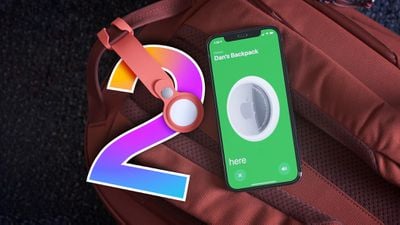
Software (mid-2025)
June will see the introduction of iOS 19, iPadOS 19, macOS 16, tvOS 19, watchOS 12, and visionOS 3, and we're counting on new Apple Intelligence features.

Even before June, we're going to get a new update to iOS 18.4 that's supposed to make Siri much smarter. Siri will learn more about you to better help you with tasks, and Siri will be able to do more in and between apps, making the personal assistant more capable than ever.
iOS 18.4 is likely coming out in April, and then with iOS 19 in June, Apple will announce even more Siri and Apple Intelligence features.
Wrap Up
With so many changes planned for the iPhone lineup, 2025 isn't going to be a boring year for Apple, especially with new Apple Intelligence features slated to be announced in iOS 19.
We're also getting new Macs, including a refreshed Mac Pro, and we'll see Apple making a major push into smart home hardware.
Make sure to follow MacRumors.com and the MacRumors roundups and guides over the course of 2025 to keep up with all of the rumors we're hearing. Bookmark our What to Expect Guide and our Events Guide to see a continually updated overview of what's on the horizon.





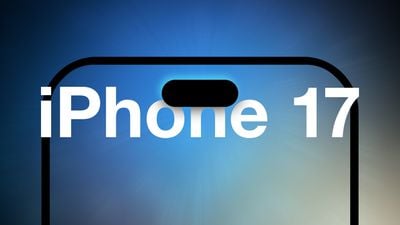
 Note: MacRumors is an affiliate partner with Anker. When you click a link and make a purchase, we may receive a small payment, which helps us keep the site running.
Note: MacRumors is an affiliate partner with Anker. When you click a link and make a purchase, we may receive a small payment, which helps us keep the site running.
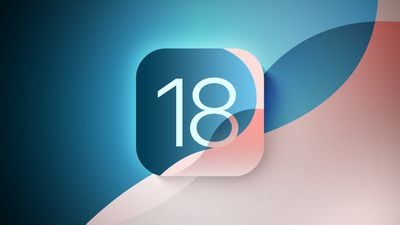



 Note: MacRumors is an affiliate partner with some of these vendors. When you click a link and make a purchase, we may receive a small payment, which helps us keep the site running.
Note: MacRumors is an affiliate partner with some of these vendors. When you click a link and make a purchase, we may receive a small payment, which helps us keep the site running.

